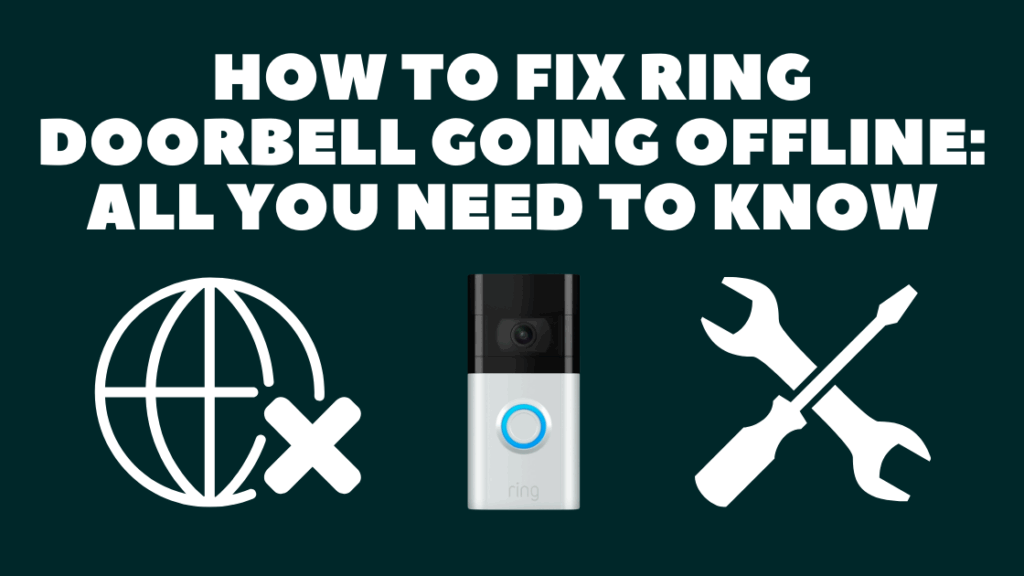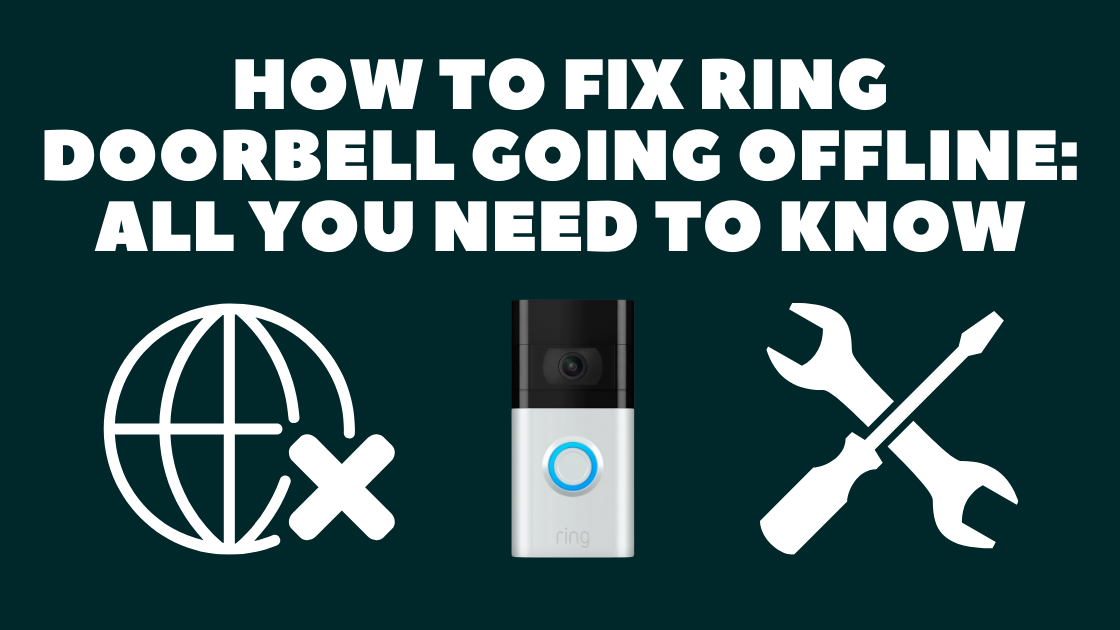
How to Fix a Doorbell: A Comprehensive Troubleshooting Guide
A malfunctioning doorbell can be more than just an inconvenience; it can be a security concern, causing you to miss important deliveries or visitors. Before calling an electrician, you can often diagnose and fix the problem yourself with a few basic tools and a systematic approach. This guide provides a step-by-step process to troubleshoot and fix your doorbell, covering common issues and solutions for both wired and wireless systems. We’ll explore everything from checking the power supply to inspecting the wiring and replacing faulty components. By the end of this article, you’ll have the knowledge to confidently tackle many doorbell problems and restore its functionality.
Understanding Your Doorbell System
Before diving into troubleshooting, it’s crucial to understand the type of doorbell system you have. The two main types are wired and wireless. Wired doorbells rely on low-voltage electrical wiring, while wireless doorbells operate using batteries and radio frequencies. Knowing which type you have will guide your troubleshooting steps.
Wired Doorbell Systems
Wired systems consist of three main components: the doorbell button, the transformer, and the chime unit. The transformer reduces the standard household voltage (120V or 240V) to a lower voltage (typically 8V, 16V, or 24V) suitable for the doorbell circuit. When the button is pressed, it completes the circuit, allowing power to flow to the chime unit, which produces the sound.
Wireless Doorbell Systems
Wireless systems are simpler, consisting of the doorbell button and the chime unit. The button is battery-powered and transmits a radio signal to the chime unit when pressed. The chime unit also requires batteries or plugs into an electrical outlet. These are often easier to install and fix simple issues with.
Troubleshooting Steps for Wired Doorbells
If your wired doorbell isn’t working, follow these steps to diagnose and fix the problem:
Step 1: Check the Power Supply
The first step is to verify that the transformer is receiving power. Locate the transformer, usually found near the electrical panel, furnace, or in the attic. Use a voltage tester to check if the transformer is receiving the standard household voltage. If not, check the circuit breaker and reset it if necessary. If the breaker trips again immediately, there could be a short circuit that requires professional attention.
Step 2: Test the Transformer Output
Once you’ve confirmed that the transformer is receiving power, test its output voltage. Use a voltage tester to measure the voltage at the transformer’s output terminals. The voltage should match the rating specified on the transformer (e.g., 8V, 16V, or 24V). If the output voltage is significantly lower or zero, the transformer may be faulty and need replacement. [See also: Replacing a Doorbell Transformer]
Step 3: Inspect the Doorbell Button
The doorbell button is a common point of failure due to exposure to the elements. Remove the button from the wall and inspect the wiring connections. Look for loose wires, corrosion, or damage. Clean the contacts with a small brush or sandpaper. Use a multimeter to check the continuity of the button. When the button is pressed, the multimeter should show continuity (a closed circuit). If not, the button is faulty and needs replacement.
Step 4: Examine the Wiring
Inspect the wiring between the transformer, button, and chime unit. Look for damaged or corroded wires. Use a voltage tester to check for voltage at the chime unit when the button is pressed. If there’s no voltage, there’s likely a break in the wiring. Repair or replace any damaged wires. Ensure all connections are secure and properly insulated. A common issue is a loose connection, which can easily be fixed by tightening the screw terminals.
Step 5: Check the Chime Unit
The chime unit can also be a source of problems. Remove the cover and inspect the internal components. Look for any signs of damage, such as broken wires, burnt components, or loose connections. Clean the contacts and moving parts with a small brush. If the chime unit is old or damaged, it may need replacement. Consider upgrading to a smart doorbell for enhanced features.
Troubleshooting Steps for Wireless Doorbells
If your wireless doorbell isn’t working, follow these steps:
Step 1: Replace the Batteries
The most common cause of a non-working wireless doorbell is dead batteries. Replace the batteries in both the button and the chime unit. Use high-quality batteries for optimal performance. Ensure the batteries are installed correctly, paying attention to the polarity (+ and -).
Step 2: Check the Range
Wireless doorbells have a limited range. Make sure the button and chime unit are within the specified range. Obstacles such as walls, doors, and metal objects can interfere with the signal. Try moving the chime unit closer to the button to see if that resolves the issue. If the range is insufficient, consider purchasing a doorbell with a longer range or a signal extender.
Step 3: Resync the Button and Chime Unit
Sometimes, the button and chime unit may lose synchronization. Refer to the manufacturer’s instructions for how to resync the devices. This usually involves pressing a button on both the button and the chime unit to establish a connection. If you’ve lost the instructions, search online for your specific model’s resync procedure. This is a simple fix that often resolves the problem.
Step 4: Check for Interference
Wireless doorbells can be affected by interference from other electronic devices, such as Wi-Fi routers, cordless phones, and microwave ovens. Try turning off or moving these devices to see if that resolves the issue. If interference is a persistent problem, consider purchasing a doorbell that operates on a different frequency.
Step 5: Inspect the Button and Chime Unit
Visually inspect the button and chime unit for any signs of damage. Look for cracks, broken components, or loose connections. Clean the contacts with a small brush. If either the button or the chime unit is damaged, it may need replacement. [See also: Choosing the Right Wireless Doorbell]
Advanced Troubleshooting and When to Call a Professional
If you’ve followed the above steps and your doorbell still isn’t working, there may be a more complex problem that requires professional assistance. Here are some scenarios where you should call an electrician:
- You’re uncomfortable working with electricity.
- You suspect a short circuit or other electrical problem.
- The transformer is difficult to access or replace.
- The wiring is damaged or requires extensive repairs.
- You’re unsure about any of the troubleshooting steps.
Attempting to fix electrical problems without proper knowledge and experience can be dangerous. It’s always best to err on the side of caution and call a qualified electrician if you’re unsure about anything.
Preventative Maintenance
To keep your doorbell working reliably, perform regular preventative maintenance. Here are some tips:
- Clean the button and chime unit regularly to remove dirt and debris.
- Replace batteries in wireless doorbells every year, even if they’re still working.
- Inspect the wiring and connections for any signs of damage or corrosion.
- Test the doorbell regularly to ensure it’s working properly.
By following these tips, you can extend the life of your doorbell and prevent many common problems.
Upgrading Your Doorbell
If you’re having persistent problems with your old doorbell, or if you simply want to upgrade to a more modern system, there are many options available. Smart doorbells offer features such as video monitoring, two-way audio, and smartphone integration. These doorbells can enhance your home security and convenience. Consider features like motion detection, cloud storage, and compatibility with other smart home devices when choosing a new doorbell.
Conclusion
Troubleshooting and fixing a doorbell can often be a straightforward process. By understanding the type of system you have and following the steps outlined in this guide, you can diagnose and resolve many common problems. Remember to prioritize safety and call a professional if you’re unsure about anything. With a little patience and effort, you can restore your doorbell’s functionality and enjoy the peace of mind it provides. Regular maintenance and timely repairs will ensure your doorbell remains a reliable part of your home.

